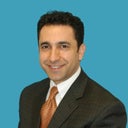Posted underRhinoplasty q&a
Should I pay extra for 3D imaging for rhinoplasty or is normal imaging sufficient? What would be the benefits be?
Answers (13)
From board-certified doctors and trusted medical professionals
Dr. Afshin Parhiscar, MD

Dr. Afshin Parhiscar, MD
Board Certified Plastic Surgeon
Answer
Dr. Robert Kotler, MD, FACS
Dr. Robert Kotler, MD, FACS
Board Certified Otolaryngologist
Answer
Dr. Arfat Jawaid, MBBS, FCPS
Dr. Arfat Jawaid, MBBS, FCPS
Otolaryngologist
Answer
Dr. Barry L. Eppley, MD, DMD
Dr. Barry L. Eppley, MD, DMD
Board Certified Plastic Surgeon
Answer
Dr. Marcus L. Peterson, MD
Dr. Marcus L. Peterson, MD
Board Certified Plastic Surgeon
Answer
Dr. William Portuese, MD
Dr. William Portuese, MD
Board Certified Facial Plastic Surgeon
Answer
Dr. Tito Vasquez, MD, FACS
Dr. Tito Vasquez, MD, FACS
Board Certified Plastic Surgeon
Answer
Dr. Arian Mowlavi, MD, FACS (license on probation)
Dr. Arian Mowlavi, MD, FACS (license on probation)
Board Certified Plastic Surgeon
Answer
Dr. Fred Suess, MD (retired)
Dr. Fred Suess, MD (retired)
Board Certified Plastic Surgeon
Answer
Dr. Michael Elam, MD (retired)
Dr. Michael Elam, MD (retired)
Board Certified Otolaryngologist
Answer
More Rhinoplasty Questions
See all Rhinoplasty Q&AWE SEND PRETTY
EMAILS
What’s trending? Who’s turning heads? Which TikTok myths need busting? We’ve got you. No fluff, no gatekeeping—just real talk. Get our free, unfiltered newsletter.